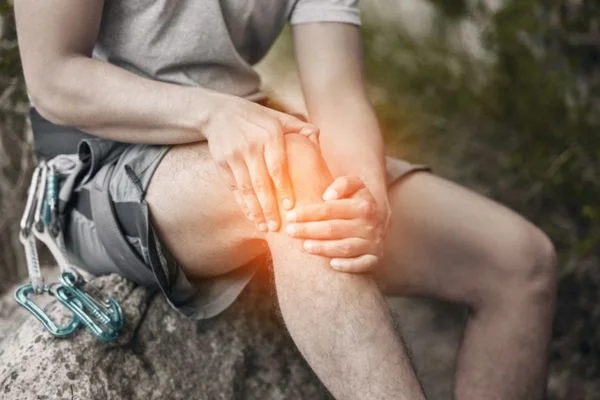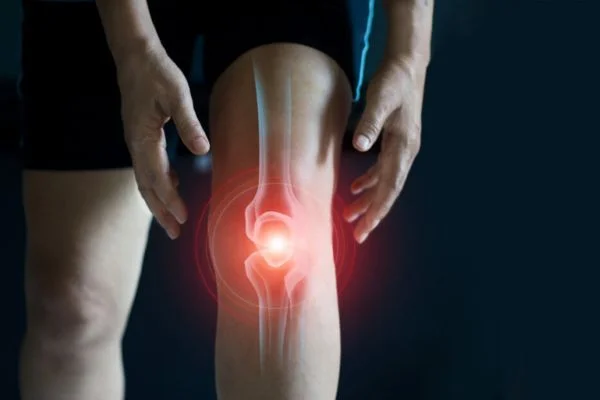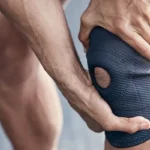When someone has hyperextended knees, it means that their knee joint has been extended too far and is beyond the normal range of motion. This can happen when walking or running, and the causes can vary from person to person. In this blog post, we’ll take a closer look at what causes knee hyperextension in gait and how to prevent it.
Knee hyperextension in gait is often due to muscle weakness, ligament laxity, or poor posture, causing the knee joint to overextend.
What Is Hyperextension?
Hyperextension of the knee occurs when the joint bends backward beyond its normal range of motion. It can happen during activities such as running, walking, or dancing.
It’s important to note that hyperextension is not necessarily indicative of an injury; a tight muscle or incorrect biomechanics can also cause it.
Also Read: How To Tape Knee For Bursitis?
What Causes Knee Hyperextension In Gait

Muscle Imbalance
One of the most common causes of knee hyperextension in gait is an imbalance between the muscles around the knee joint. Specifically, if one side of your body is more flexible than the other, that side will be able to extend farther than usual when walking or running.
This can put excessive strain on your other leg and result in injury over time. To prevent this from happening, it’s important to regularly stretch and strengthen your leg muscles to maintain a balance between both sides.
Flexibility Issues
If you have tight hamstrings or quadriceps muscles, this could lead to knee hyperextension during gait. When these muscles are tight, they can cause your knee joint to bend too much when you walk or run, which results in excessive strain on the joint itself.
To prevent this from occurring, it’s important to stretch these muscle groups and improve your overall flexibility regularly. Yoga or pilates classes are great ways to do this!
Weak Core Muscles
Weak core muscles can also contribute to knee hyperextension while walking or running because they provide stability throughout your entire body.
If these muscles are not adequately strengthened, then they will not be able to provide enough support for your lower body which can lead to increased strain on your knees when you move around.
To avoid this issue, incorporate plenty of core exercises into your workout routines, such as planks and crunches.
Also Read: What Does A Knee Brace Do For Your Knee Bursitis?
How Can Hyperextension Be Addressed?
The good news is that there are ways to address knee hyperextension while walking or running. Strengthening exercises for the hips and thighs are one option; these can help correct any underlying muscular imbalances that could be causing an excessive forward lean during gait.
Additionally, practicing proper running form can help reduce strain on the knees by keeping your body in alignment throughout your stride cycle. Finally, investing in shoes with proper support and cushioning will help reduce knee strain while moving around.
Also Read: Does Climbing Stairs Cause Knee Problems?
What Ligaments Prevent Hyperextension?
The body’s ligaments that prevent hyperextension are primarily located in the knee joint, providing stability and support. The four primary ligaments guarding against hyperextension are the anterior cruciate ligament (ACL), the posterior cruciate ligament (PCL), and the medial collateral ligament (MCL).
All of these play a critical role in protecting against excessive knee stress and strain. Additionally, the internal lateral and external oblique popliteal ligaments also flank our joints, helping them stay secure and functioning correctly.
Without these support networks, our bodies would lack stability, leaving us prone to injury when we walk, jump, or run– activities everyone needs to be able to do without worrying about overstretching a joint.
Also Read: Should I Wear A Knee Brace For Bursitis?
Bottom Line:
So, what causes knee hyperextension in Gait? Knee hyperextension during gait is a common problem that many people experience due to muscle imbalances, flexibility issues, and weak core muscles.
By stretching regularly and strengthening all muscle groups around the knee joint—including those in the core—you can help reduce your risk of developing any injury caused by excessive strain on the knees while walking or running.
Taking care of yourself now will pay off in dividends down the road!



